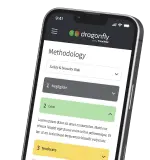In this episode of the Tech Toolkit Podcast, hosted by Scorchsoft, we delve into the captivating realm of app monetisation. Beginning with an overview, we explain the necessity of strategic planning and a profound understanding of various monetisation models to transform an app into a profitable venture.
We discuss traditional monetisation models, such as in-app payments and advertising, highlighting their potential benefits and associated challenges. For instance, the 'Apple Tax' on in-app payments and the need for high user engagement for advertising revenue. We also touch on non-traditional revenue models like partnerships and selling user data, underscoring the need for careful navigation around privacy laws.
We then explore many ways to monetise your app, from in-app payments and subscriptions to Software as a Service (SaaS) and selling data insights. We also discuss less conventional models such as group licensing deals, ecosystems, franchise models, and open-source premium. Finally, we emphasise the importance of aligning your monetisation strategy with your business model, user growth plans, and user experience.
Key Topics Covered:
- Importance of strategic planning for app monetisation
- Traditional and non-traditional monetisation models
- Detailed exploration of various ways to monetise your app
- Aligning monetisation strategy with business goals and user experience
- Navigating challenges in app monetisation
- Insights into evolving opportunities for app monetisation.
Here is a list of the monetisation methods mentioned in this cast for easy reference:
- Method 1: In-app payments
- Method 2: In-app subscriptions
- Method 3: Software as a Service (SaaS)
- Method 4: Sell data or insights based on app use
- Method 5: Sell via partners
- Method 6: Free app with paid services (Freemium)
- Method 7: Affiliate commission
- Method 8: Ad revenue
- Method 9: Group licensing deals
- Method 10: Ecosystems
- Method 11: Product sales
- Method 12: Franchise models
- Method 13: Dropshipping
- Method 14: Enterprise solution selling
- Method 15: Pay as you
- Method 16: Open-source premium
- Method 17: Open-source ecosystem
- Method 18: API licensing
- Method 19: Marketplaces
- Method 20: Auctions and reverse auctions
And you can get a copy of Execute Your Tech Idea by Andrew Ward here.
Full Podcast Transcript
Welcome to the Tech Toolkit Podcast by Scorchsoft, your go-to source for the latest trends and insights in app development and technology. Today, we're exploring the fascinating world of app monetisation. Whether you're a seasoned developer or just starting your journey in the app industry, understanding how to effectively monetise your app is crucial. So, let's dive right in.
Apps are more than just digital tools; they're potential revenue generators. However, turning an app into a profitable venture requires strategic planning and a deep understanding of various monetisation models. Whether it's in-app payments, advertising, or non-traditional revenue models like partnerships or selling user data, each method has its own unique advantages and challenges.
Take in app payments, for example. It's a direct and potentially highly lucrative method of app monetisation, especially for apps that offer compelling content or services. But it's not without its challenges. For instance, Apple charges a 30% fee on transactions made through their App Store that are deemed to “unlock” in app content or features, known as the "Apple Tax." However, this fee can drop to 15% under certain conditions, such as for small businesses or after the first year of a subscription. Navigating these nuances is critical to maximising your revenue from in-app payments.
On the other hand, advertising can provide a steady stream of income. But this method requires high user engagement and frequent usage, as significant revenue often requires massive traffic. YouTube, for instance, pays content creators about $1000 to $2000 per million views. Therefore, to make a substantial income from ads, you need a high volume of user interaction.
But there's more to app monetisation than these traditional methods. Non-traditional revenue models, like partnering with other businesses or selling user data, can provide additional revenue streams. They can also serve as unique selling points if they diverge from how competitors monetise their apps. Remember, though, selling user data requires careful navigation around privacy laws and user consent.
Given you are probably listening to this cast for some inspiration, let's delve into the most popular ways you can monetise your app.
1, in app payments. This is where users pay for a specific feature or item within your app. This is commonly used in gaming apps where you might pay for additional lives, advanced features, or in-game items.
2: In-app subscriptions. Here you allow users to access premium content or features for a recurring fee. This is a great way to generate a consistent stream of income from your users.
3: Software as a Service. Often referred to as SaaS, is another model where users pay a subscription fee to access your software. This can be an attractive option as it can provide ongoing, predictable revenue.
4: Selling Data. This sort of monetization is based on the app's usage. If your app collects extensive user data, you might be able to monetise it by selling insights to other businesses. However, do remember to maintain user trust and comply with all relevant privacy laws.
5: Partnerships. Here, if your app complements another company's product or service, you might consider partnering up to sell their product within your app in exchange for a commission.
6: Freemium Models. This kind of model allows the users to download your app for free, but users can pay for premium features or services within the app. It indeed is an excellent opportunity for users to try the app before investing money.
7: Affiliate Commission. This strategy enables you to promote other businesses' products or services within your app and earn a commission on any purchases made through your app.
8: Ad Revenues. This classic monetisation strategy entails making your app free and generates income via displaying ads to your users. It's a sound choice if you have a large and active user base.
9: Group Licensing Deals. This strategy involves selling licenses to groups, such as businesses or schools, which in turn provide the app to their members or employees.
10: App Ecosystems. A new model where you create a suite of related apps with different functionalities. The theory behind this is that users are more likely to use and pay for others in the ecosystem if they have one app.
11: Product Sales. A direct method where you sell physical or digital products through your app. This could range from merchandise to ebooks to online courses.
12: Franchise Models. Essentially, you license your app to other businesses, letting them use your technology and brand in return for a fee.
13: Drop Shipping. A method where you sell products through your app while a third party manages the inventory and shipping. You're essentially the intermediary, receiving orders through your app and passing them to the supplier.
14: Enterprise Solution Selling. You create a custom solution for a large business. Notably, this often involves significant customisation and consequently comes with a higher price tag.
15: Pay-as-You-Go Models. Users pay for the services as and when they use them. This is a strong potential draw for users hesitant to commit to a subscription.
16: Open-Source Premium Models. Offering a free, open-source version of your app, you charge for a premium version that offers additional features or services.
17: Open-Source Ecosystem Models. This model involves making the core software open-source, but selling related services or products. These could be technical support, bespoke development, or premium features.
18: API Licensing. This method implies licensing your app's API to other developers, allowing them to create their applications or services using your technology.
19: Marketplace Models. Creating a platform for buyers and sellers to connect and carry out transactions, you make a profit by charging a percentage on each transaction.
20: Auctions/Reverse Auction Models. This involves users bidding for items or services within your app. In a reverse auction scenario, sellers compete to provide the lowest possible price to the buyer, creating an engaging, competitive environment for users.
If you’d like to read more detail about each of these revenue generation methods, then please check out Andrew Ward’s book Execute Your Tech Idea on Amazon, Kindle, or Audible.
These are just a few of the ways you can monetise your app. Remember, the best model for you will depend on your app, your audience, and your business goals. Your monetisation strategy should align with your business model and user growth plans. If your app serves as an internal tool for a business, optimising it for efficiency can be a more suitable revenue model than direct user payments.
Secondly, consider the user experience. Overly aggressive monetisation tactics can alienate users, so ensure your methods feel natural and offer genuine value. This also extends to pricing strategy. You need to strike a balance between the perceived value of your offerings and your users' willingness to pay.
Lastly, consider the scalability and flexibility of your monetisation strategy. As your app grows, your strategy should be able to adapt and scale accordingly. This includes the technical aspects of implementing your chosen monetisation strategy, such as integrating payment systems and managing subscription services.
Monetising your app effectively is a balancing act. It's about aligning with your business goals, understanding your user base, and sometimes, thinking outside the box. As technology continues to evolve, so do the opportunities for app monetisation. Stay informed, be creative, and choose a method that aligns with your app's purpose and audience.
Thank you for joining us on the Tech Toolkit Podcast by Scorchsoft. Don't forget, technology isn't just about what it can do; it's about what you can do with it. Scorchsoft is here to help you harness the power of technology to transform your ideas into successful digital solutions. Remember to check out scorchsoft.com if you need help with your next app project. Until next time, keep innovating!








